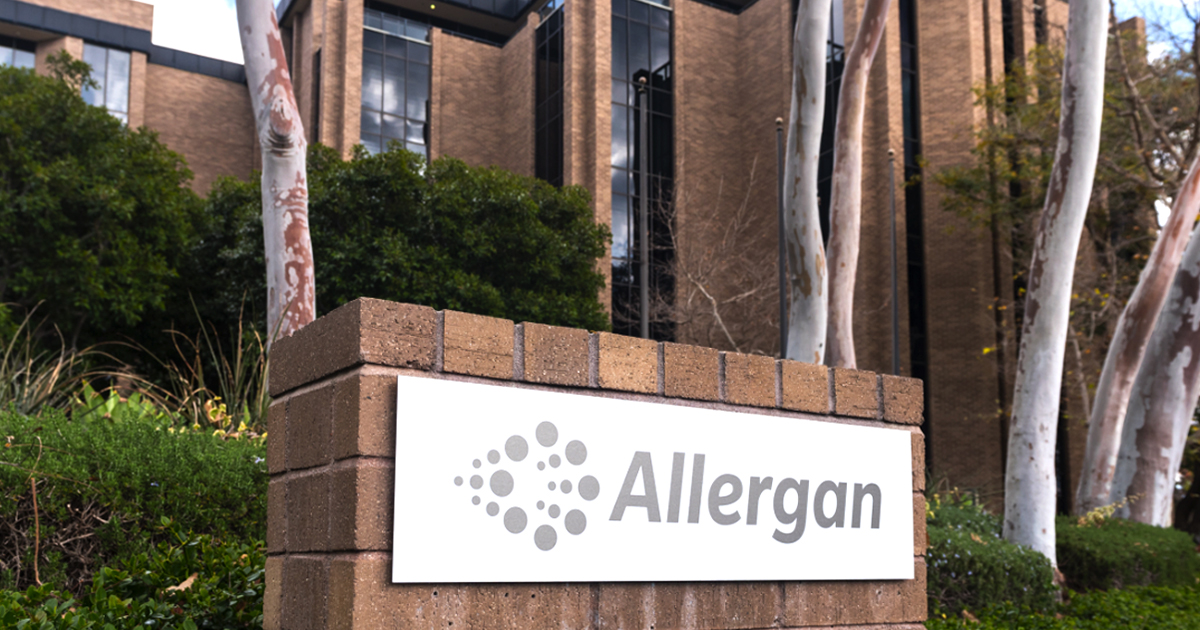After Trial Results, Allergan Set to Tweak Abcipar Formulation

Last week, one day before the American Society of Retina Specialists and OIS Retina convened in Vancouver, Allergan and its collaborative partner Molecular Partners touted the release of top-line results from two Phase III clinical trials showing its abcipar pegol DARPin drug met its primary endpoint – noninferiority to ranibizumab (Lucentis, Roche/Genentech) for treatment of neovascular age-related macular degeneration.
But Allergan’s stock slumped slightly, and retina specialists at the ASRS meeting grumbled about the high rates of inflammation in the abcipar groups the trials reported.
Since then, Allergan’s stock has recovered and then some as the issues surrounding inflammation have been put into context and the company has explained its plans for a promising new formulation of abcipar to address those concerns.
Focus on the Formulation
David Nicholson, PhD, Allergan’s chief R&D officer, says the company is still on track to file the biologics license application (BLA) with the Food and Drug Administration in the first half of next year for two formulations of abcipar: that used in the Phase III SEQUOIA and CEDAR trials; and the modified formulation that will be the subject of the upcoming MAPLE trial. He made the comments in a call with analysts last week, many of whom had probing questions about the inflammation readout of SEQUOIA and CEDAR.
To be sure, the 12-month vision outcomes in both trials showed eight- or 12-week dosing of abcipar measured up to ranibizumab four-week dosing. Both trials involved three treatment arms: two arms of 2 mg abcipar – the first at three monthly doses followed by dosing every eight weeks for eight total doses (Q8); the second comprising two monthly doses followed by a dose after eight weeks and then every 12 weeks after that for six total doses (Q12); and 0.5 mg of Lucentis every four weeks for 13 total doses.
In SEQUOIA, the proportion of patients with stable vision in the abcipar Q8 group was 94.8% versus 91.3% for abcipar Q12 and 96% for Lucentis. In CEDAR, the proportions of patients with stable vision were 91.7%, 91.2%, and 95.5%, respectively. The trials defined stable vision as loss of <15 letters in best-corrected visual acuity from baseline.
Back Story on Inflammation
But the incidence of intraocular inflammation in the two abcipar treatment groups was significantly higher than the Lucentis arm: 15.1% and 15.4% of patients, respectively, in the abcipar Q8 and Q12 arms versus 0%.
In the analysts’ call, Dr. Nicholson seemed nonplussed about the inflammation outcomes of SEQUOIA and CEDAR. He said the inflammation rates were in line with the Phase II trials, and that Lucentis and Eylea (aflibercept, Regeneron), too, had higher rates of inflammation in pre-approval trials. “Over time manufacturing processes can improve,“ he told the analysts. At another point in the call, Dr. Nicholson said, “That is the history of biologics.”
Also in the analysts’ call, Raj Maturi, MD, of Midwest Eye Institute and Indiana University School of Medicine, noted that the inflammation was reversible and easy to treat. In the context of eight- or 12-week abcipar dosing versus four weeks for Lucentis, he added, the inflammation outcome “does not bother me in any way.”
Dr. Nicholson pointed out that animal studies of the modified formulation that will be used in the upcoming MAPLE trial have shown promising results in reducing the release of inflammatory mediators in white blood cells. Deeper investigation of the existing abcipar formula focused on removing from the clinical formulation proteins originating from Escherichia coli, better known as E. coli, the bacteria that provide the host cells for abcipar production, he said. Additionally, the production team has generated sophisticated analytical and purification methodology to enable the production of this optimized formulation.
Upon the announcement of the SEQUOIA and CEDAR results, Allergan’s stock slumped from around $176 a share to below $172, and stayed at that level for a couple of days. Seeking Alpha noted that investors seemed worried about the inflammation outcomes of the abcipar trials. However, on Wednesday of this week Allergan’s stock closed near $177 a share, seeming to have put the inflammation concerns behind.
For questions about this article, contact Richard Mark Kirkner at rich@healthegy.com.
